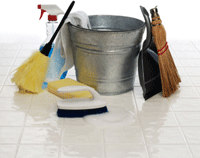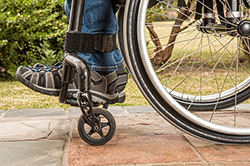 A nationwide study by the Washington National Institute for Wellness Solutions (IWS) found that only 10% of middle-class workers believe that they have enough savings to cover medical emergencies and the long-term cost of a critical illness.
A nationwide study by the Washington National Institute for Wellness Solutions (IWS) found that only 10% of middle-class workers believe that they have enough savings to cover medical emergencies and the long-term cost of a critical illness.
Diseases such as cancer, heart disease, or Alzheimer’s can be life-changing financially, as well as personally. Although most respondents said that, even with Medical and Disability Income insurance, they would need out-of-pocket funds to cover their expenses from a serious medical condition, they lack the savings to fall back on. Nearly half (45%) felt they would never recover financially from a battle with Alzheimer’s or dementia; for cancer, the percentage is 38%.
Out of 1,001 survey participants between the ages of 30 and 66 and annual household incomes of $35,000 to $99,999, 75% have saved less than $20,000. Among these, half have less than $2,000 in savings – and one in four have no current savings.
One-fourth of respondents “did not know” what resources they would use to help offset their expenses, says IWS. Others would use credit cards (28%), loans from friends and family (23%) or financial institutions (19%) to help cover what insurance doesn’t.
Washington National Insurance Co president Barbara Stewart advises employees to give themselves a reality check about the financial burden of critical illness. “Find out what your current insurance will – and will not – cover” says Stewart, “and then assess your overall financial health. Identify the gaps between the resources you would need and the options you have.”
We recommend that you offer your employees Critical Illness coverage as a voluntary benefit that will provide an extra layer of financial protection when they face the challenge of a serious disease. Give us a call.
Read more
 The Federal Emergency Management Agency (FEMA) previously reported that over 40 percent of businesses affected by a disaster do not reopen. Of course, the COVID-19 pandemic is unprecedented and that number is likely to be higher as the economy reopens.
The Federal Emergency Management Agency (FEMA) previously reported that over 40 percent of businesses affected by a disaster do not reopen. Of course, the COVID-19 pandemic is unprecedented and that number is likely to be higher as the economy reopens.
We hope these tips will help, as America re-opens.
Seek Assistance
Several organizations are available to help your business rebuild after a disaster strikes. Here is a link to federal information on disaster assistance – https://www.sba.gov/funding-programs/disaster-assistance
- The Small Business Administration – Apply for a low-rate, long-term loan through the SBA’s Office of Disaster Assistance.
- Your bank – Talk to your banker about a low-cost loan or other financial assistance. Paycheck Protection Plan is still available.
- Insurance agent – File a claim and discuss your ongoing needs.
- Community – Ask your community, including neighbors, clients and vendors, to help clean up, rebuild and return to business as usual.
When disaster strikes, your business must be prepared. These steps can help. If you don’t have these steps in place, consider implementing them today in preparation for the next disaster.
Review Your Business Contingency Plan
If you don’t already have one – create a business contingency plan. It’s part of your emergency preparedness strategy. This backup plan outlines the steps you’ll take if you ever face a disaster, and it will address:
- Business continuity. COVID-19 or other pandemics do not qualify for this coverage. It may be a while before we have clarity on this from insurers and courts.
- Emergency response
- Crisis communications
- Information technology
- Incident management
- Employee assistance
Some of the questions this document answers include:
- Who is the go-to contact?
- How will we accept, fill and track orders?
- What alternatives are available if our vendors are non-operational?
- What’s the best way to secure data?
Examine your business contingency plan today and make sure it addresses all your needs. With it, your business can regroup quickly after a disaster strikes.
Review Your Insurance and Risk Protection
You probably carry typical business insurance such as liability, property and employee coverage. Read these policies carefully, and store copies of your insurance documents in a safe place where they are easily accessible any time.
If you see gaps in your coverage or notice that you don’t have coverage for certain disasters, purchase additional policies. An umbrella coverage or flood insurance are two examples of insurance products that protect your business. For more details on how to prepare insurance-wise for an emergency of any kind, talk to your insurance agent.
Read more

March 19 was the first day of spring – which makes this a good time to think about some “spring cleaning” around your workplace.
A thorough cleaning can enhance safety by eliminating hazards. Why not welcome in the spring by taking a careful look at some occasional and infrequent housekeeping tasks?
For example, clutter builds up in most work areas, creating such hazards as fire, tripping and blocked exits. Spring cleaning is the perfect time to dispose of:
Trash. Got a pile of broken pallets on the loading dock? Dumped a lot of construction debris on the back lot? Remove anything not in use that has piled up from the site.
Equipment. That frayed sling or wobbly ladder might be out of service, but if it’s not easy to repair, why is it still there?, even if it has a “do not use” tag on it, someone in a hurry or not paying close attention might use it anyway — and regret it afterward.
Chemicals. Old or unused chemicals create unnecessary workplace hazards. They might be flammable or toxic. What’s more, many chemicals that aren’t dangerous when purchased can become so as they deteriorate over time. Dispose of chemicals that are no longer in use, have passed their use-by dates, or have missing or illegible labels.
Clean and Repair. Besides clearing out the clutter, your spring cleaning can address infrequent needs that will boost worker safety and health. For example, maybe it’s time to clean and/or service:
Signs and labels. Signs and labels are important for workplace safety, warning workers of low clearances, identifying machinery controls and power sources, showing workers which direction materials in pipes are flowing, and much, much more. However, they also take a lot of abuse. Replace damaged signs and illegible labels, clean signs that have become too grimy to read, and re-hang signs that have been knocked askew.
Heating, ventilation, and air conditioning (HVAC) systems. A health hazard evaluation by the National Institute for Occupational Safety and Health found that properly maintained HVAC systems were associated with a decreased incidence of lower respiratory symptoms, allergies, and asthma among building occupants. Proper maintenance controls mold, bacteria, allergens, and other contaminants within the system.
Offices. University of Arizona researchers found that office phones, computer keyboards and mice, and desktops harbor 400 times more infectious bacteria than office toilet seats. Yet in most offices, vacuuming and emptying the trash are the only regular cleaning performed. Encourage workers to take disinfecting wipes to office surfaces — not just once a year, but daily if possible — to reduce infectious illness transmission in the workplace. Also, have your cleaning crew do an extra thorough job from time to time.
Remember, the cleaner your workplace, the safer your workers. Our risk management professionals would be happy to chat further– just give us a call.
Read more
 Short-term disability insurance is an important resource you may have heard about through your job or private insurance agent. Understand what short-term disability insurance is as you decide if it’s right for you.
Short-term disability insurance is an important resource you may have heard about through your job or private insurance agent. Understand what short-term disability insurance is as you decide if it’s right for you.
Short-Term Disability Insurance Defined
Short-term disability insurance is a benefit that covers a temporary disability caused by an illness or injury. Usually in effect for a short time period, it pays the policy holder up to 66-2/3 percent of their weekly earnings. It may also include a benefit that helps an ill or injured employee return to work.
The waiting period to file a short-term disability insurance claim is up to two weeks after you become ill or injured. Be prepared to show medical proof of your illness or injury. Benefits usually last from three to six months. Your policy will have a maximum per-month benefit cap.
Why You Need Short-Term Disability Insurance
Short-term disability insurance is designed to provide financial assistance if you suffer an illness or are injured. The top five reasons people purchase short-term disability insurance include:
- Pregnancy
- Injuries
- Joint disorders
- Digestive issues
- Cancer
If one of these or any illness or injury affects you and you have to take time off work, do you have enough financial resources to manage your living expenses and other financial obligations? In essence, short-term disability insurance protects you and your resources. It covers your living expenses and gives you peace of mind until you can return to work.
An Example of how Short-Term Disability Insurance Works
Here’s an example of how short-term disability insurance can help you.
Let’s say you acquire a bad infection and must be on bed rest for a few weeks. Instead of worrying about money, tapping into your savings, racking up credit card debt or pushing to return to work before you’re healed, rely on short-term disability insurance.
Your policy only covers a portion of your weekly income, but it is a big help. If your salary is $32,000 with weekly gross earnings of $615.38, your weekly short-term disability insurance benefit will be approximately $406.15. You can use that money to pay any expenses, including rent, groceries or other bills.
Who Should Buy Short-Term Disability Insurance?
Short-term disability insurance is important for almost anyone, especially if you don’t have a big nest egg saved for emergencies. Review your financial portfolio with your financial advisor as you decide if a short-term disability insurance policy is right for you.
How to Buy Short-Term Disability Insurance
Talk to your Human Resources manager about short-term disability insurance. You can also purchase a policy through your personal insurance agent. It’s invaluable coverage that protects you and your financial security.
Read more
Mold growth in your commercial building can cause health concerns and compromise your building’s integrity. Because mold grows quickly in damp conditions and thrives on wood, insulation, carpet, paper, and other organic surfaces where moisture and oxygen are present, it’s especially problematic during the spring season.  Prevent health concerns like asthma, respiratory infections, breathing difficulties, itchy eyes, nasal congestion, and skin irritations when you reduce mold in several ways.
Prevent health concerns like asthma, respiratory infections, breathing difficulties, itchy eyes, nasal congestion, and skin irritations when you reduce mold in several ways.
Inspect your Building for Mold Growth
Mold thrives in damp, dark and humid areas, including basements, crawl spaces, bathrooms, carpeted areas, and storage spaces. Inspect your entire building, including secluded areas, at least once a week. Look for visible mold growth that may be green, black or brown, and note any spotty or fuzzy stains, another sign of mold.
Repair Leaks
If you notice damp areas in your commercial space, look for leaks that could cause and encourage mold growth. Repair broken pipes, wall cracks or unsealed windows so that the area remains dry and mold-free.
Install Dehumidifiers
Damp areas and condensation could cause mold to grow, so install dehumidifiers where necessary. These appliances reduce moisture and keep the area dry and free of dangerous mold.
Clean the HVAC System
The heating, ventilation and air conditioning system could spread mold spores throughout your building and increase health risks. Clean the system thoroughly and maintain it as you protect your employees, customers and vendors.
Treat Mold Properly
Small areas of mold growth can be cleaned and treated with bleach or another mold cleanser. Remember to wear a respirator and protective clothing as you perform this task to protect yourself from an allergic reaction.
If your building requires more extensive remediation methods, hire a professional to access the mold, determine the extent of the damage and create a removal plan. Depending on the growth, treatment could require renovations like drywall or sub-flooring replacement. In this case, hire a reliable professional to remove the mold and treat the area properly.
File an Insurance Claim
Your commercial property insurance policy may cover mold removal, especially if it stems from a covered peril, such as a storm or act of vandalism. Check the policy or talk to your agent as you determine if you can file a claim and cover the mold removal and treatment.
Implement an Ongoing Inspection Program
After removing and treating the mold, schedule regular inspections of the area. Look for evidence of mold growth and excessive moisture as you prevent hazardous mold growth.
Mold damages your commercial building and affects the health of your employees. This spring, reduce mold and protect your assets with these tips. For more tips, talk to your commercial property insurance agent.
Read more
 A nationwide study by the Washington National Institute for Wellness Solutions (IWS) found that only 10% of middle-class workers believe that they have enough savings to cover medical emergencies and the long-term cost of a critical illness.
A nationwide study by the Washington National Institute for Wellness Solutions (IWS) found that only 10% of middle-class workers believe that they have enough savings to cover medical emergencies and the long-term cost of a critical illness.
 The Federal Emergency Management Agency (FEMA) previously reported that over 40 percent of businesses affected by a disaster do not reopen. Of course, the COVID-19 pandemic is unprecedented and that number is likely to be higher as the economy reopens.
The Federal Emergency Management Agency (FEMA) previously reported that over 40 percent of businesses affected by a disaster do not reopen. Of course, the COVID-19 pandemic is unprecedented and that number is likely to be higher as the economy reopens.
 Short-term disability insurance is an important resource you may have heard about through your job or private insurance agent. Understand what short-term disability insurance is as you decide if it’s right for you.
Short-term disability insurance is an important resource you may have heard about through your job or private insurance agent. Understand what short-term disability insurance is as you decide if it’s right for you. Prevent health concerns like asthma, respiratory infections, breathing difficulties, itchy eyes, nasal congestion, and skin irritations when you reduce mold in several ways.
Prevent health concerns like asthma, respiratory infections, breathing difficulties, itchy eyes, nasal congestion, and skin irritations when you reduce mold in several ways.